Introduction
The YWCA is an organization that supports and advocates for the well-being of the Carlisle community. Its official mission statement is to be “dedicated to eliminating racism, empowering women and promoting peace, justice, freedom and dignity for all”. For this project, we were given the opportunity to work with the YWCA to create a directory of employers that are willing to hire people that have been previously incarcerated. As we have learned, incarceration affects those who have imprisoned well after their sentences have ended. According to International Centre for Prison Studies (ICPS) , the U.S. imprisons more people than any other country in the world. In fact, the U.S imprisons 716 people for every 100,000 (Walmsley, 2015). Once those prisoners are released, they experience a second imprisonment in terms of being locked away from having the opportunity to better themselves. These ex-offenders are denied their rights to life, liberty and the pursuit of happiness. They are unable to secure jobs that allow them to be active members in society, which in turn renders them unable to receive health benefits, 401ks , and loans.
Our Methods
Employment discrimination is a national problem for the United States. This discrimination is the result mass incarceration. For our project, we focused specifically on how it affects Pennsylvania, more specifically Carlisle. However, Pennsylvania as a whole has countless legislation that employers fail to follow. In Pennsylvania, the law states that: “ Felony and misdemeanor convictions may be considered by the employer only to the extent to which they relate to the applicant’s suitability for employment in the position for which he has applied. (Community Legal Studies pg. 4)” That means that unless their crime has to do with the tasks associated with their job, then these ex-offenders should be given the opportunity to work. However, even from the beginning of our project we learned that is not the case.
Our first step in starting this project was to meet with Sonya Browne, the Hallmark Program Coordinator for the YWCA. When we met with her, we learned why she felt that there was a need for a directory of companies that would be willing to hire ex-offenders. Mrs. Browne knew of some members of the Carlisle community that were in the process of trying to find jobs after being released from prison. We decided that it would be beneficial to our project if we could have the chance to speak with these individuals. Mrs. Browne proceeded to set up a meeting time with two ex-offenders for the next week. On March 3rd, we met with the two ex-offenders and heard their stories. Their stories were moving, because at the end of the day the only thing on their minds was how they were going to provide for their families. When speaking with them, we were able to learn some specific problems they faced when searching for jobs, starting from not even being able to get an application to only being offered temporary jobs. We learned that some employers will allow them to go through the hiring process until they receive the results of their background check. After they receive the results noting their crime, employers will often end the process, leaving the ex-offenders hopeless.
One of the people we spoke to told us of one instance where he was completely set to begin his first day of work and on the morning of, as he was walking out the door he received a call telling him that he no longer had a job. He also told us of the false hope ex-offenders receive when they are hired by temp agencies that have no plan of keeping them on staff for more than a year. This is especially problematic because for most companies, it takes up to 6 months for a worker to finish their probationary period and actually receive the benefits associated with their position. The other person we spoke with told us that she had been able to find a job, but that it was infeasible because it was located in Maryland, which would mean she had to drive two hours to get to work everyday. After speaking with them more, I learned that some ex-convicts cannot even get a job flipping burgers at fast food restaurants because even they rely on background checks during the hiring process. At the end of our conversation, what was most salient was the fact that many companies lead these people on wild goose chases, promising employment and then pulling out at the last second. This fact molded our approach to this project.
We approached the project by first creating a list of questions that we would ask companies once we called them. We then put that list into a script, so that we knew what to say every time we called .We started each call by saying “Hi my name is____ and I have a couple questions about your hiring process in regards to ex-felons.” This one sentence was the start of a difficult process. Depending on how “non-discriminatory” the company wanted to seem, they would either transfer us to HR or tell us right away that they didn’t discriminate. One of the most frustrating calls was to a warehouse in Mechanicsburg. When we called, after a couple of rings one woman picked up and said “Hold on let me transfer you to our HR office”. And so we waited and once we were transferred, the woman who picked up said ” Hold on, let me transfer you to corporate”. Come to find out, she had transferred us back to the original woman. After that, the two women continued to play ping-pong with our call. At the end, we ended up just being sent to voicemail. When we went to our second calling session, we met the same disappointment. Although we were met much disappointment, we did encounter a few helpful people. There was one session where we called another warehouse; the hiring manager was very helpful. He answered all of our questions without giving us a hard time. We were finally able to ask the questions that we had formed after speaking to the ex-offenders. We asked him the following questions:
- Is there a specific period of time that has to have passed between their release date and when they can be hired?
- What are the minimum qualifications needed for someone to be hired ?
- Do they need special skills?
- What types of criminal records are accepted or excluded ?
- Does the applicant need to include anything with the resume or application?
- What type of positions are generally available?
- Can you accommodate people on probation that may have a curfew?
- Is the application online ?
- Do you need a recommendation ?
He told us that everything depended on a case-by-case basis. Overall, the response by companies had been a real disappointment. It is really hard to even find a list of companies to call.
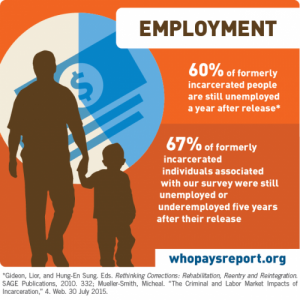
The Implications
It wasn’t until Janaiya and I met with two people from the Carlisle community that were previously incarcerated that we really understood the severity of the issue in a community that we’re so close to. They explained to us the trouble and the obstacles they have face when trying to re-enter society. Here were two people who are really trying to provide for themselves and their families and they can’t because of this blemish on their resume. To take on this project, Janaiya and I had to gain their trust. Like Howard McGary expresses in “Racism, Social Justice, and Interracial Coalitions”, Black people have to gain the trust of their people in order to be legitimized in a movement, and so we gained their by just sitting and talking with them. They told us how the employer would lead them on to think they had he decision to be rescinded because of their background check. Instead of re-entry, what they end up experiencing is isolation. It is a continuing cycle of isolation; when they are imprisoned they are cut off from civilization, their families, and their loved ones. When they get out, the expectation is that they will be able to just rejoin their close community and their greater society, but it doesn’t happen so smoothly.
With that in mind, we set out to find employers in Carlisle and the surrounding areas that would hire ex-offenders. We found the companies by Googling what companies exist in Carlisle and then we called them to ask them questions about hiring ex-offenders. I knew that this would be a difficult task. I didn’t get real answers from most places, and so the other times that we worked on the project we Googled companies that hire ex-offenders in Pennsylvania. Some of them worked out and some didn’t. I noted warehouses would answer our questions and offered us advice. The company Central Transport was really helpful and gave us good tips on how an ex-offender could be hired by their company. He explained that in order to have the best chance for employment that the past offender would have to be upfront and honest about their conviction. Also he suggested that on the application where they are asked about their offense that the applicant tell everything because that is what the employer sees first. I had those moments when I felt really good and had good conversations but there were also moments where company didn’t even try to listen to us. I contacted a moving company and began with our usual introduction and then proceeded to ask about their hiring policies. The woman seemed very unsettled just talking to me after I explained that I’m asking about hiring when it comes to ex-offenders. Her answer to my question, “does your company hire ex-offenders?” was explicitly no. She then went on to explain that it is because they are a moving company and they directly go into people’s homes. I just said ok, and got off the phone because I couldn’t believe she implied that all ex-offenders are thieves. It was in that moment that I realized how stigma really works against those who were previously incarcerated. I wonder if outcomes would be different if the ex-offenders were educated but we couldn’t even get that far into the conversations with employers to discuss that. Overall, we only had a few places, like Ace Hardware, and Central Transport, that were willing to speak to us and look into hiring ex-offenders and the rest continue to contribute to the discrimination of past offenders.
Sociologist Erving Goffman focuses on the concept of stigma. He breaks stigma into different categories but within these categories there is either a discredited attribute or a discreditable attribute. A discredited attribute cannot be seen initially but can be uncovered which would then lead to stigma. A discreditable attribute is something that is clearly visible, like skin color physical disability (Goffman, Stigma: Notes on the Management of a Spoiled Identity). Because, these things are visible then they are automatically subject to stigma. Being an ex-offender is a discredited attribute but is quickly uncovered when applying for employment, hence why it is difficult for ex-offender to find a job because they face stigma. According to the NAACP Criminal Justice fact sheet, the U.S is only 5% of the world population and has 25% of world prisoners. To imagine that many people having a difficult time finding employment is disheartening since a job is essential to being able to afford a quality life.
Conclusion
There is still a long way to go to eliminate the stigma that has been placed on ex-offenders in the Carlisle and surrounding communities. The biggest issue is that most companies are simply uncomfortable even talking about their hiring processes for ex-offenders. That being said, the future of this project seems bleak based off the results that we have gotten so far. Because Carlisle is a small town, it is difficult to find many places that are not difficult to access through local transportation. Companies need to approach each offender on an individual basis instead of stereotyping them as unfit and incompetent. The YWCA and its volunteers should continue to hold these companies accountable to not only the law but their claims of being non-discriminatory. Due to the limitations of this project, we were not able to assess the skills that past offenders in Carlisle may have. This information would influence the employers that we contacted. To further expand this project, we suggest reaching out to past offenders, getting to know what skills they possess, and work with them on resume building so that they can present themselves to the employer in a holistic fashion.
| Company | Address | Background Check? | Online Application? | Notes |
| Best Western | 1155 Harrisburg Pike, Carlisle, PA 17013
|
Company did not answer | Company did not answer | HR is only available on Mondays at 10:00 am |
| Dollar Tree | 650 E High St #640, Carlisle, PA 17013
|
Yes | Yes | No special process |
| Allen Distribution | 670 Allen Rd, Carlisle, PA 17015
|
Company did not answer | Company did not answer | Company did not answer |
| NFI Warehouse | 1605 Shearer Dr, Carlisle, PA 17013
|
Company did not answer | Company did not answer | Company did not answer |
| Carlisle Self Storage
|
1910 W Trindle Rd, Carlisle, PA 17013
|
Yes | N/A | No open positions currently. |
| American Red Ball Moving Company | 1235 Ritner Hwy, Carlisle, PA 17013
|
N/A | N/A | Company does not hire ex-felons at all. |
| Ace Hardware |
4072 Carlisle Rd, Dover, PA 17315 |
Yes | Yes | Company says that it depends on what the felonies are , everything is on a case by case basis |
Recommended Readings and Links
- Erving Goffman Stigma: Notes on the Management of Spoiled Identity
- Michel Foucault Discipline and Punish: The Birth of the Prison
- http://www.prisonsociety.org (provides tips and information on re-entry programs)
- Formerly Convicted Citizens Project
- Ban the Box Campaign
References
- Goffman, Erving. Stigma: Notes on the Management of Spoiled Identity. Englewood Cliffs, N.J: Prentice-Hall, 1963. Print.
- McGary, Howard. “Racism, Social Justice and Interracial Coalitions”. Race and Social Justice. Malden, MA: Blackwell Publishers, 1999. Print.
- Walmsley, Roy. “World Prison Population List.” Institute for Criminal Policy Research (2015): n. pag. Web.


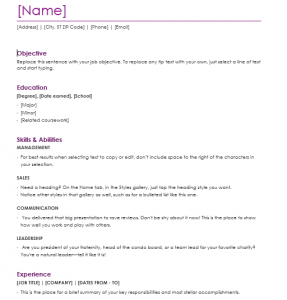
 unity. Although it had tremendous success, the program was discontinued due to a variety of circumstances. However, with the help of Ms. Sonya Browne, Quadrese Glass, Teryon Lowery, and Karl Lyn, the youth male mentorship program has been resurrected. Carlisle’s “Men Overcoming Obstacles” operates as a branch of Carlisle Victory Circle, and aims to provide male youth with leadership workshops, after school tutoring, and a space for self-reflection. With the assistance of C.V.C and Dickinson College, Men Overcoming Obstacles will help these young men gain access to facilities and education of which some youth are deprived. Carlisle Community members lack access to resources, support, and knowledge that are allocated to other communities. As Carlisle Victory Circle has already implemented a program for young women, GirlPower!, Men Overcoming Obstacles will help apportion resources, such as a two story house and educational amenities to male youth as an initiative for social justice. This program will achieve this mission through a series of measures such as leadership workshops, community service opportunities, guest speakers, college visits, and homework tutoring sessions.
unity. Although it had tremendous success, the program was discontinued due to a variety of circumstances. However, with the help of Ms. Sonya Browne, Quadrese Glass, Teryon Lowery, and Karl Lyn, the youth male mentorship program has been resurrected. Carlisle’s “Men Overcoming Obstacles” operates as a branch of Carlisle Victory Circle, and aims to provide male youth with leadership workshops, after school tutoring, and a space for self-reflection. With the assistance of C.V.C and Dickinson College, Men Overcoming Obstacles will help these young men gain access to facilities and education of which some youth are deprived. Carlisle Community members lack access to resources, support, and knowledge that are allocated to other communities. As Carlisle Victory Circle has already implemented a program for young women, GirlPower!, Men Overcoming Obstacles will help apportion resources, such as a two story house and educational amenities to male youth as an initiative for social justice. This program will achieve this mission through a series of measures such as leadership workshops, community service opportunities, guest speakers, college visits, and homework tutoring sessions.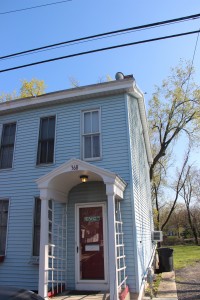
 few sentiments that pervade the community’s minority male youth such as low self-esteem, difficulties with identity construction, and alienation. These realities that my research illuminated are not reflections on the individual community members, but rather a reflection on the impact of structural inequality and social injustice. In his article, Understanding Cultural Diversity and Learning, Professor John Ogbu delineates the ways in which individuals are subjected to injustices according to their individual identities. He states, “Structural forces such as gender, class, and ethnicity circumscribe one’s opportunities” (Ogubu 2). Ogubu’s assertion that components of one’s identity can limit one’s access to opportunities is indicative of Carlisle community members’ experiences. The young males that I spoke with in Carlisle were predominately Black and Latino males. I found that these youth lacked opportunities and developmental resources such as educational support, counseling, career guidance, and spaces for social engagement. My overall research revealed that a male youth mentorship program established in Carlisle is pivotal, and will be able to serve as a social justice intervention plan.
few sentiments that pervade the community’s minority male youth such as low self-esteem, difficulties with identity construction, and alienation. These realities that my research illuminated are not reflections on the individual community members, but rather a reflection on the impact of structural inequality and social injustice. In his article, Understanding Cultural Diversity and Learning, Professor John Ogbu delineates the ways in which individuals are subjected to injustices according to their individual identities. He states, “Structural forces such as gender, class, and ethnicity circumscribe one’s opportunities” (Ogubu 2). Ogubu’s assertion that components of one’s identity can limit one’s access to opportunities is indicative of Carlisle community members’ experiences. The young males that I spoke with in Carlisle were predominately Black and Latino males. I found that these youth lacked opportunities and developmental resources such as educational support, counseling, career guidance, and spaces for social engagement. My overall research revealed that a male youth mentorship program established in Carlisle is pivotal, and will be able to serve as a social justice intervention plan.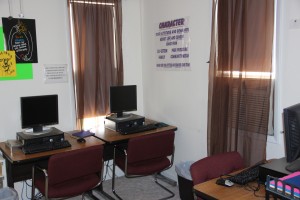
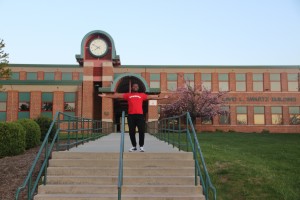
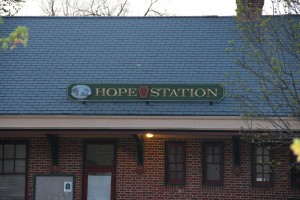
 hat is multi-faceted. It requires multiple partners, from diverse backgrounds, who all share a similar vision for the community. Also, working for social justice is a process that is not easily achieved. While working to construct the components of Men Overcoming Obstacles, we were faced with many obstacles that seemed unsurmountable. We concluded that there was a need for the collaboration with organizations in the community in order to gather youth participants. With Men Overcoming Obstacles, we are combating the insufficient support that exists for the young men of color in the Carlisle community. We are providing a venue for these young men to express their grievances amidst a world that often mitigates their experiences.
hat is multi-faceted. It requires multiple partners, from diverse backgrounds, who all share a similar vision for the community. Also, working for social justice is a process that is not easily achieved. While working to construct the components of Men Overcoming Obstacles, we were faced with many obstacles that seemed unsurmountable. We concluded that there was a need for the collaboration with organizations in the community in order to gather youth participants. With Men Overcoming Obstacles, we are combating the insufficient support that exists for the young men of color in the Carlisle community. We are providing a venue for these young men to express their grievances amidst a world that often mitigates their experiences. sh to use the space outside our clubhouse to create a garden. As of know we do not know what we will grow but ideas range from a community garden to a food garden where we would sell our produce to the farmers’ market to help fund our program.
sh to use the space outside our clubhouse to create a garden. As of know we do not know what we will grow but ideas range from a community garden to a food garden where we would sell our produce to the farmers’ market to help fund our program.
 m the enslavement period to contemporary times, many African Americans have mobilized to formulate social justice movements that demand the rights of full citizenship which the Declaration of Independence and the United States Constitution guarantee. In Justice and Grassroots Struggles, Loretta Capeheart and Dragan Milovanovic quote Doug McAdam’s argument that “[s]ocial movements are an expression of a desire for justice that has gone unmet. When those concerned for social justice, including equality, need, and/or desert, find that their demands are not considered or seriously addressed by the political structures in place, they will often turn to social mobilization in an attempt to be heard and/or attain justice” (160). In their attempts to be heard, various African American social movement organizations, such as Black Lives Matter, have devised “ideological and political interventions” that demand the abolition of racist, sexist, and classist practices in this country that impact the viability of Black people and communities most directly.
m the enslavement period to contemporary times, many African Americans have mobilized to formulate social justice movements that demand the rights of full citizenship which the Declaration of Independence and the United States Constitution guarantee. In Justice and Grassroots Struggles, Loretta Capeheart and Dragan Milovanovic quote Doug McAdam’s argument that “[s]ocial movements are an expression of a desire for justice that has gone unmet. When those concerned for social justice, including equality, need, and/or desert, find that their demands are not considered or seriously addressed by the political structures in place, they will often turn to social mobilization in an attempt to be heard and/or attain justice” (160). In their attempts to be heard, various African American social movement organizations, such as Black Lives Matter, have devised “ideological and political interventions” that demand the abolition of racist, sexist, and classist practices in this country that impact the viability of Black people and communities most directly.